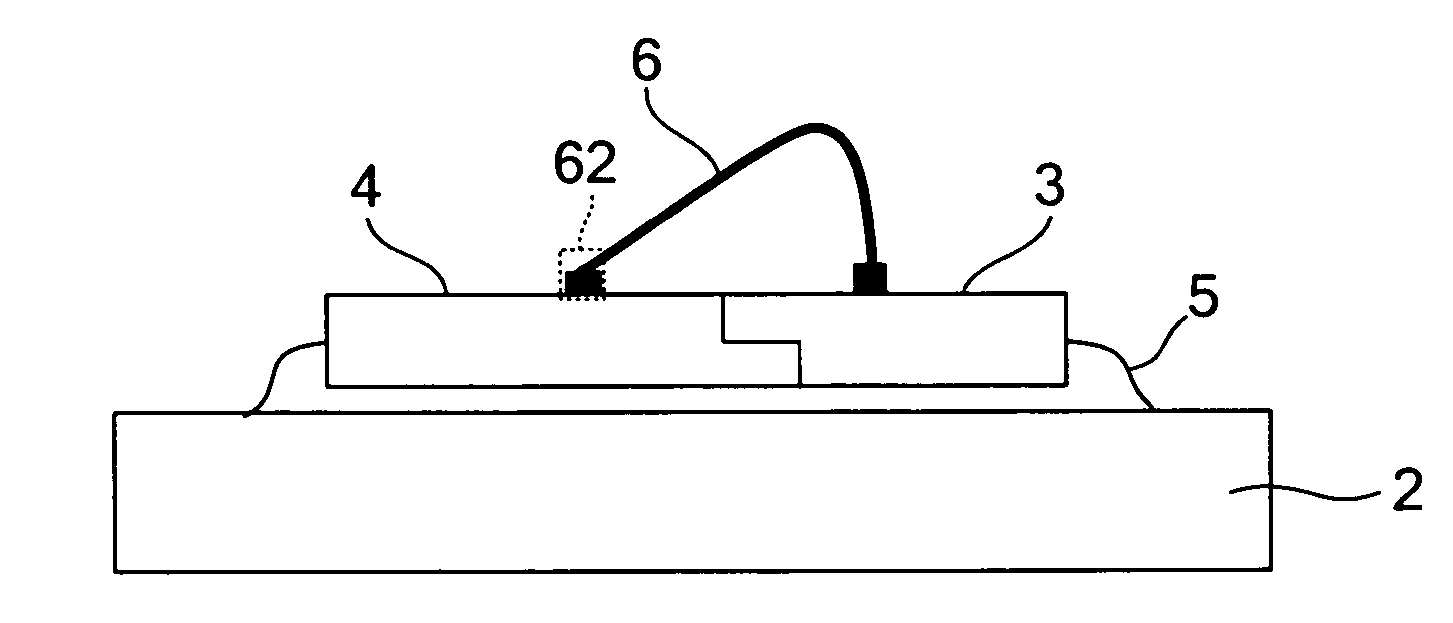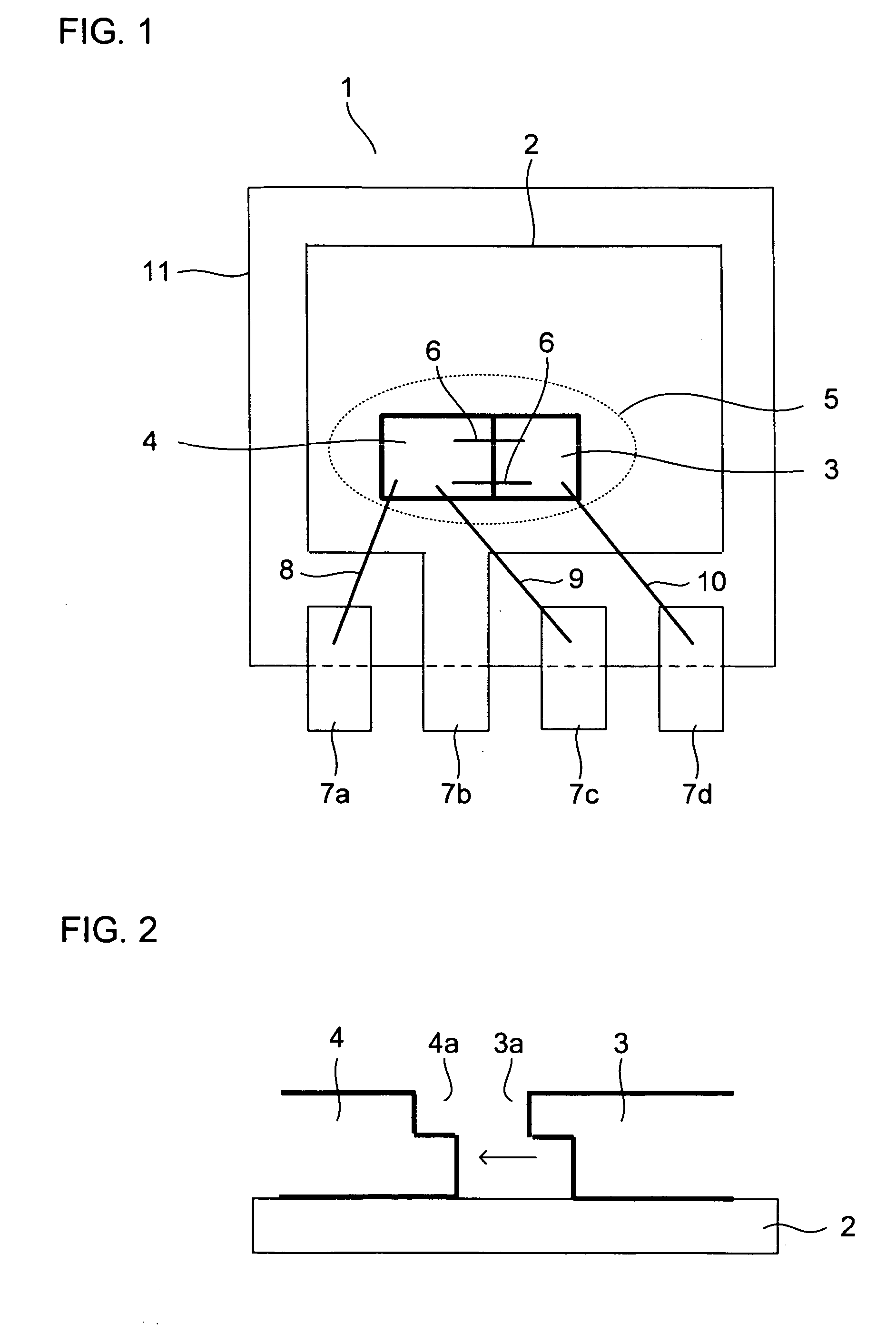Power supply device
a power supply device and power supply technology, applied in the direction of pulse technique, semiconductor/solid-state device testing/measurement, instruments, etc., can solve the problem of not being able to reduce the difference between the input and output voltages to smaller than the saturation voltage of the emitter-collector, and achieve the effect of increasing the contact area, facilitating the design of power supply devices, and increasing the contact area
- Summary
- Abstract
- Description
- Claims
- Application Information
AI Technical Summary
Benefits of technology
Problems solved by technology
Method used
Image
Examples
Embodiment Construction
[0031]Hereinafter, an embodiment of the present invention will be described with reference to the accompanying drawings. FIG. 1 is a sectional view showing a principal portion of a power supply device (four-terminal series regulator) according to the invention. As shown in FIG. 1, the power supply device 1 includes a control IC 3 fabricated by a bipolar process and a power supply element 4 fabricated by a MOS process, and have them molded into a single resin package 11, with a chip edge 3a (see FIG. 2) of the control IC 3 kept in intimate contact with a chip edge 4a (see FIG. 2) of the power supply element 4. In the following description, the structure of this power supply device 1 will be described in detail.
[0032]The power supply device 1 generates heat when operated as a regulator, and much of the heat is generated by the power supply element 4. Overheating of the power supply element 4 may break down the power MOS FET formed in the chip thereof On detecting an abnormal temperatu...
PUM
 Login to View More
Login to View More Abstract
Description
Claims
Application Information
 Login to View More
Login to View More - R&D
- Intellectual Property
- Life Sciences
- Materials
- Tech Scout
- Unparalleled Data Quality
- Higher Quality Content
- 60% Fewer Hallucinations
Browse by: Latest US Patents, China's latest patents, Technical Efficacy Thesaurus, Application Domain, Technology Topic, Popular Technical Reports.
© 2025 PatSnap. All rights reserved.Legal|Privacy policy|Modern Slavery Act Transparency Statement|Sitemap|About US| Contact US: help@patsnap.com



